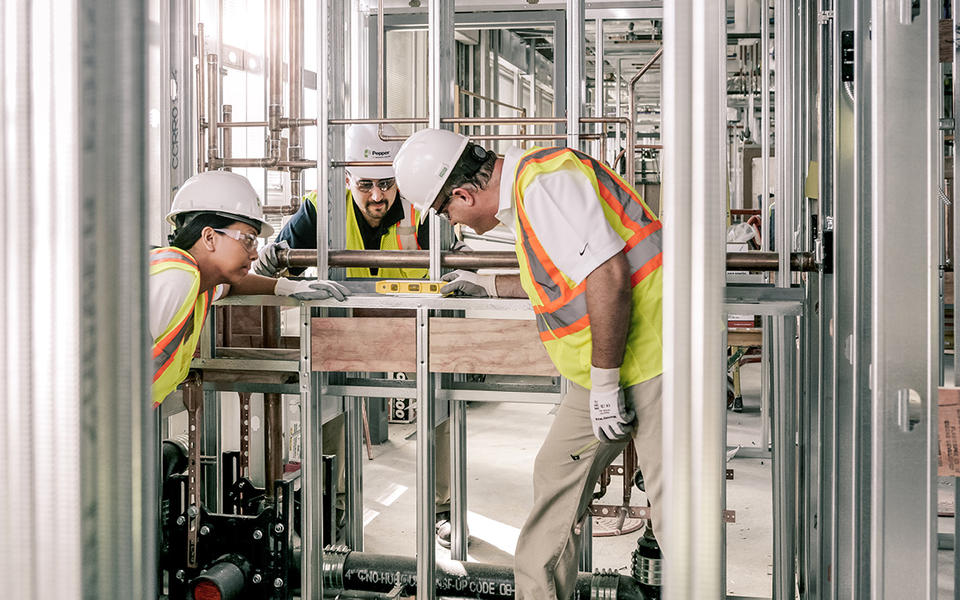Industry insights, People
While we talk about diverse viewpoints as a benefit to our organizations and our projects, generational stereotypes have challenged people’s ability to embrace differences. However, at Pepper, we believe these diverse perspectives create new opportunities.
The multi-generational workforce is a hot topic right now, and not just in our industry. For those who have followed the subject, you know that for the first time in our history, we have four generations in the workforce today. In fact, we have four different generations represented in the Pepper family right now. Some companies say they have five generations, if you consider both board stakeholders (Traditionalists or Silent Generation) and interns (Z Generation or iGen).
For a few years now, articles have predicted that Millennials (or Gen Y) will represent 50 percent of the workforce by 2020. While company-wide they represent 40 percent of Pepper’s workforce, because of the growth we’ve experienced in the past two years we’ve already reached 50 percent in our Indiana office – with three years left to go.
What’s even more significant is the role they play within our organization.
- Traditionalists = company stakeholders
- Baby Boomers = company leaders
- Gen Xers = group leaders
- Millennials = project leaders
They’re not just a majority in our business; our Millennials are already in leadership positions – and some at the company level. A recent study by Robert Half Management Resources identified key differences among generations in communication style, change management and technical skills.
Communication styles:
Despite the stigma of younger generations’ communication styles, they have enhanced our ability to communicate effectively. Their preference for the latest technologies makes them quick to adopt online communication platforms, cloud collaboration and mobile, real-time applications. And they’ve persuaded our most seasoned team members to join them by using these tools to produce results.
Millennials and Gen Xers appreciate the value of visualization tools like building information modeling (BIM), and they’ve worked with our senior project team members to ensure the technology contributes to our projects in meaningful ways. BIM has helped us communicate logistics challenges and other issues that words and our traditional planning and construction documents could not convey.
While the younger generations tend to rely on technology for communication, they still value frequent feedback and face-to-face interactions. The more direct and confrontational communication style of our senior staff can conflict with the younger generations, but we’ve also found they can complement each other and lead to more efficient results.
Finally, the Baby Boomers maintain the traditional forms of communication that are still appreciated by many of our clients and partners. Once they understand the technology, Boomers and Gen Xers, have helped translate the tech talk into a message everyone can understand, particularly for those less tech savvy. And they are showing our younger generations how to relate to people outside of the technology.
Change management:
Some sources suggest Millennials are open to change more than other generations. However, each generation has its own aversion to change for different reasons. According to N-Gen, the events of each generation have contributed to their resistance in different ways:
- Following the mantra of, “if it isn’t broken, don’t fix it,” Traditionalists accept change when they need to fix a problem.
- Because of the ups and downs in their employment history, Baby Boomers are reluctant to change if they perceive it to be short-lived.
- Gen Xers want change to benefit them personally and to translate into results.
- Because of how quickly technology has changed in the past decade, Millennials expect frequent and fast change, but they want it to make an impact and not be top-down.
Despite the resistance, each generation is open to change. As we look for ways to build faster, better, safer and cheaper, including the perspective of all generations will result in the right solutions. The challenge of our leadership is to create a culture that encourages everyone to be open-minded and work together.
For this reason, a multi-generational approach also fits well with the more collaborative delivery methods, such as design-build. While the processes and technologies can be an adjustment for workers used to “the way they’ve always done things,” once they see the positive outcomes, we’ve seen the nay-sayers become strong advocates.
Skills:
Finally, our industry is experiencing a worker shortage, and primarily in the field. Several factors have contributed to the shortage, from workers leaving the industry during the Great Recession, to Traditionalists retiring, to a smaller demographic of Generation Xers and Millennials pursuing a higher education degree instead of joining the skilled trades. This shift in the workforce leaves a gap in skill sets.
As we manage with fewer workers, we’re introducing new technology and tools that allow us to do more with less. The Semi-Automated Mason used on the Purdue Flex Lab project can do the work of six or more people with just three. While there’s a learning curve to operate it, the work still requires traditional bricklaying knowledge to ensure proper installation.
As we share information on our projects, it’s not just top-down. It also flows bottom-up and cross-team. We rely on the skill sets of each group: the construction expertise of Baby Boomers, financial acumen of Generation Xers and the technology know-how of Millennials.
Our younger staff teach our tenured staff about technology, and our seasoned team members share their knowledge of construction practices that can only be gained through years of experience. Some of our best solutions have come when a senior superintendent is paired with a project engineer or virtual construction manager.
Everyone is talking about Millennials. Then what?
Last month, CEO Stan Pepper gave the keynote address to a group of CEOs at the 2017 BuiltWorlds Summit, titled Generational Acceleration. He tied the speed of technology development and absorption to each generation, but he didn’t stop with Millennials.
“Everyone’s talking about Millennials, but they’re already leading. We should be thinking about Gen Z and the generation after that. What ideas will Gen Z contribute, and how will Millennials manage them?”
– CEO Stan Pepper
We’re still learning about the current generation of interns. They present yet another layer of challenges, but from what we know so far, I’m excited to see what they will do and what they will teach us.
About the Author






